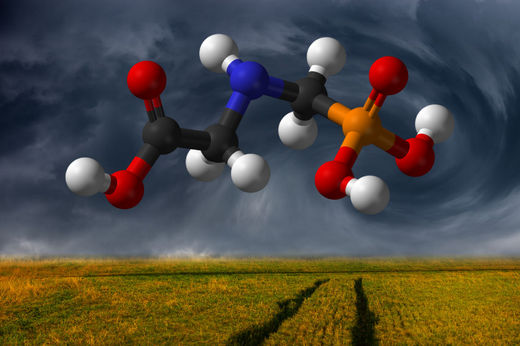| Online: | |
| Visits: | |
| Stories: |

| Story Views | |
| Now: | |
| Last Hour: | |
| Last 24 Hours: | |
| Total: | |
Government Study Finds: Roundup Weedkiller Found in 75% of Air and Rain Samples
Sayer Ji/Greenmedinfo.com
The GM farming system has made exposure to Roundup herbicide a daily fact of our existence, and according to the latest US Geological Survey study its probably in the air you are breathing…
A new study from the U.S. Geological Survey, accepted for publication online ahead of print in the journal Enviromental Toxicology and Chemistry, titled, “Pesticides in Mississippi air and rain: A comparison between 1995 and 2007,”[i] reveals that Roundup herbicide (aka glyphosate) and its still-toxic degradation byproduct AMPA were found in over 75% of the air and rain samples tested from Mississippi in 2007.
The researchers evaluated a wide range of pesticides currently being used through weekly composite air and rain sampling collected during the 1995 and 2007 growing seasons in the Mississippi Delta agricultural region.
The researchers discovered the following:
- Thirty-seven compounds were detected in the air or rain samples in 2007; 20 of these were present in both air and rain.
- Glyphosate was the predominant new herbicide detected in both air (86%) and rain (77%) in 2007, but were not measured in 1995.
- Decreased overall pesticide use in 2007 relative to 1995 generally resulted in decreased detection frequencies in air and rain, but observed concentration ranges were similar between years even though the 1995 sampling site was 500 m from active fields while the 2007 sampling site was within 3 m of a field.
- Mean concentration of detections were sometimes greater in 2007 than in 1995 but the median values were often lower.
- Seven compounds in 1995 and five in 2007 were detected in ≥50% of both air and rain samples. Atrazine, metolachlor, and propanil were detected in ≥50% of the air and rain samples in both years.
- Total herbicide flux in 2007 was slightly greater than in 1995, and was dominated by glyphosate.
According to the report, 2 million kilograms of glyphosate were applied statewide in 2007, or 55% of the total herbicide flux for that year (~129 μg/m2), leading them to state the high prevalence of glyphosate in air and water “was not surprising.” Even though glyphosate was only tested in 2007, based on the 1995 figures on glyphosate use (147,000 kg state-wide) the researchers estimated that glyphosate added 3% of the total herbicide flux for 1995, or approximately 7 micrograms per centimeter (~7 μg/m2) per sample. This estimate, if correct, reveals that there has been an~ 18 fold increase in glyphosate concentrations in air and water samples in only 12 years (1995-2007).
The researchers pointed out that, “the 2007 weekly air concentration pattern for glyphosate was similar to those of other commonly detected herbicides in both 1995 and 2007 in that the highest concentrations occurred in April and May. However, there were detectable concentrations of glyphosate over the entire growing season, which is consistent with how glyphosate is used on GM crops, including for post-emergent weed control throughout the growing season.” The longer period of exposure adds to growing concern that this ubiquitous toxicant represents an unavoidable body burden and that even small daily environmental exposures may be causing significant harm through their cumulative and synergistic effects with other toxicants.
Source: http://truthisscary.com/2014/02/government-study-finds-roundup-weedkiller-found-in-75-of-air-and-rain-samples/




